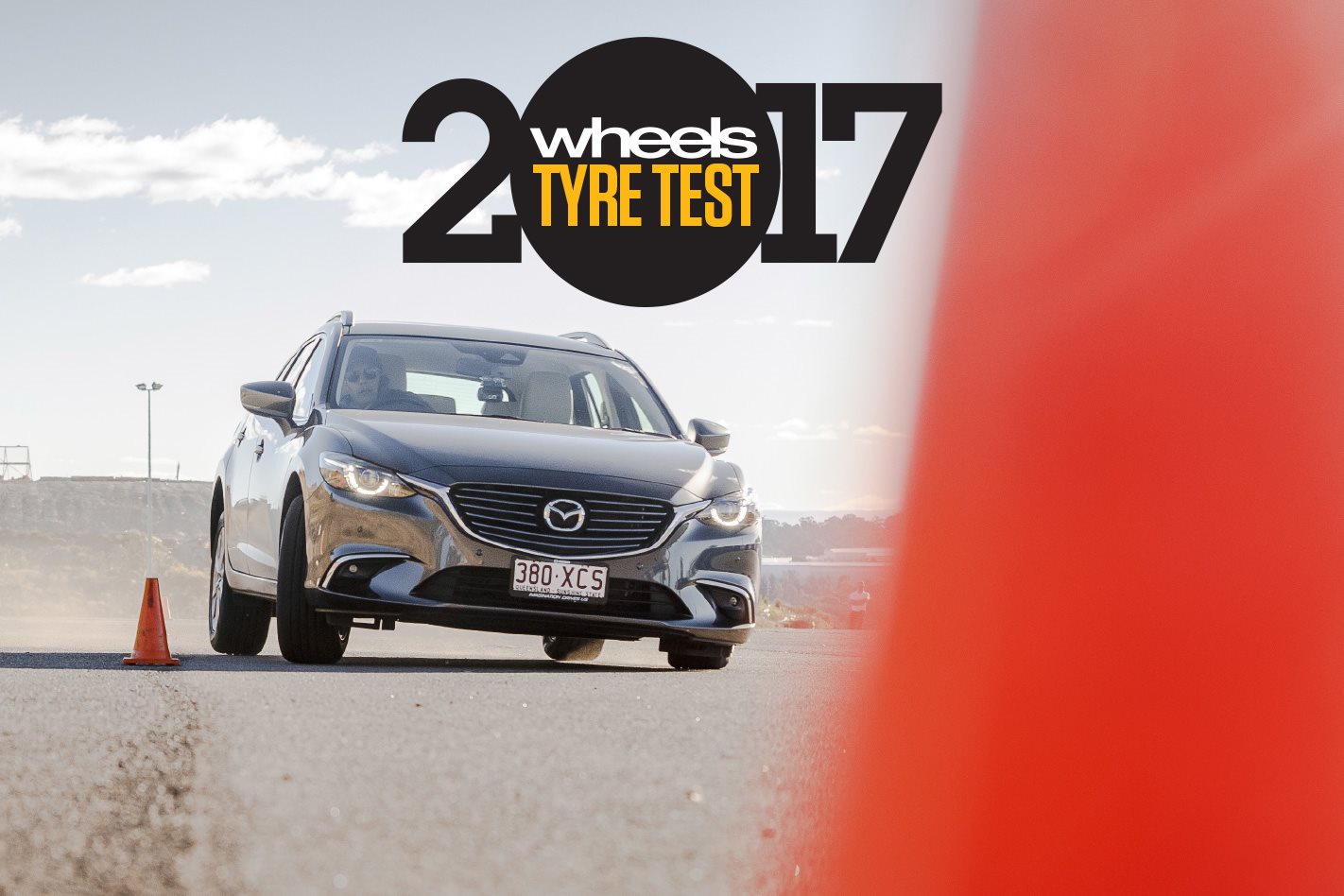The Tread Mill
AUSTRALIA’s voracious appetite for premium and high-performance cars suggests buyers are increasingly willing to spend up big in order to enjoy their motoring. Yet, at the same time, Wheels’ tyre industry sources say there are plenty of people who will cheap-out when it’s time for a new set of rubber, inadvertently removing handling and stopping performance from their car.
Those that fork out for a fast car would likely do the same for high-quality new tyres, and we can certainly see the value in spending an extra $10K to step from a WRX to an STI, or from a Golf GTI to an R. But what we just don’t get is how to rationalise increasing your car’s stopping distance and reducing its cornering grip and feel, just to save a couple of hundred bucks on tyres.
Without giving too much away, the magnitude of the difference between the best and worst rubber on the 2017 Wheels Tyre Test was 3.2 metres of braking distance in the dry, and 4.6 metres in the wet, which sounds to us like enough of a reason to choose decent tyres.
The difference in lap time on the handling circuit was 1.85sec, which seems like plenty even before you consider that the two-lap dash takes less than 60 seconds. And we didn’t even test any truly dud tyres…
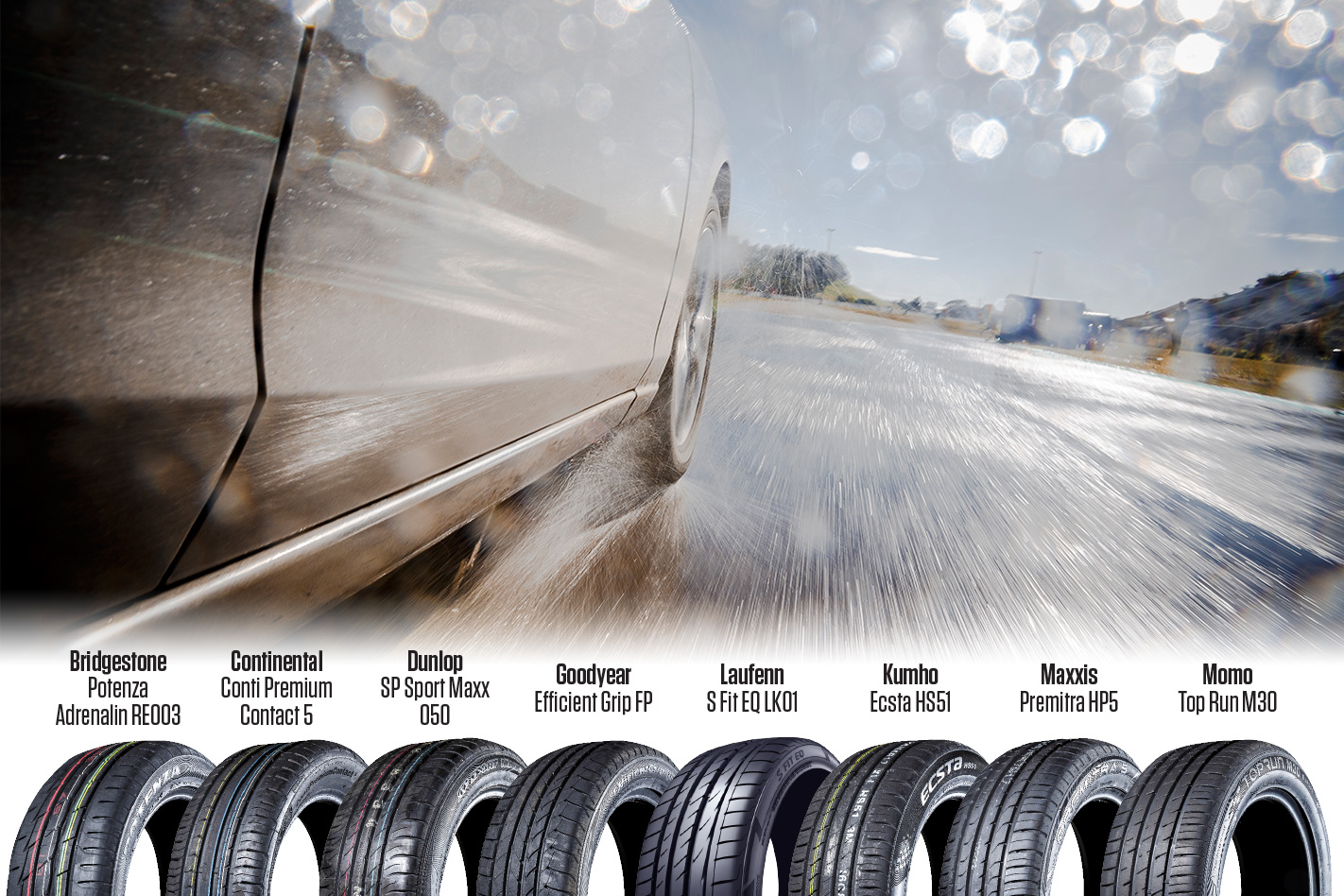
The tarmac surrounding the Sydney Dragway scrutineering shed provided the venue, and the stopwatches and Racelogic Performance Box offered up the data. Seasoned Tyre Test steerer Renato Loberto guided the Mazda 6 Touring wagon while cutting to the core of tyre performance with his insightful observations.
After taking a tyre noise reading at a 60km/h cruise, Ren ripped into a series of hot laps of our compact handling circuit, which served to scrub the surface of the tyres. This led into a trio of circuit sprints against the stopwatch. Then Ren rolled into the slalom and dry braking test, followed by three stops on a consistently wet surface.
Each dynamic test discipline is scored out of 10, and tyre noise is out of five. Scores are assigned relative to the best performer – if one tyre wins all, it would achieve a perfect 100 percent in the final scoring, and our winner got close, at 98.2 percent.
A control tyre was deployed at regular intervals as a means of measuring track and car evolution, which could be addressed in the analysis. The results, served up over the next nine pages, reflect the range of ability on offer in OE-replacement tyres across a moderate price range.
Each tyre pattern tested is available in a wide range of sizes, and the results apply broadly to each of them, as well as on cars with different chassis and drive layouts.
The field
We assembled eight original equipment (OE) replacement tyres for the 2017 Wheels Tyre Test.
Working in the common 17-inch diameter, without excessive width or unduly shallow sidewalls kept the tyres in the ballpark of those fitted to the average car. We used 225/55R17s because that’s the standard fitment on the Mazda 6 test mule. In terms of market positioning and price, major players Bridgestone (Japan), Dunlop and Goodyear (United States) are represented, as is German premium brand Continental; fellow Euros Michelin and Pirelli declined to participate, as did former winner, Japan’s Yokohama.
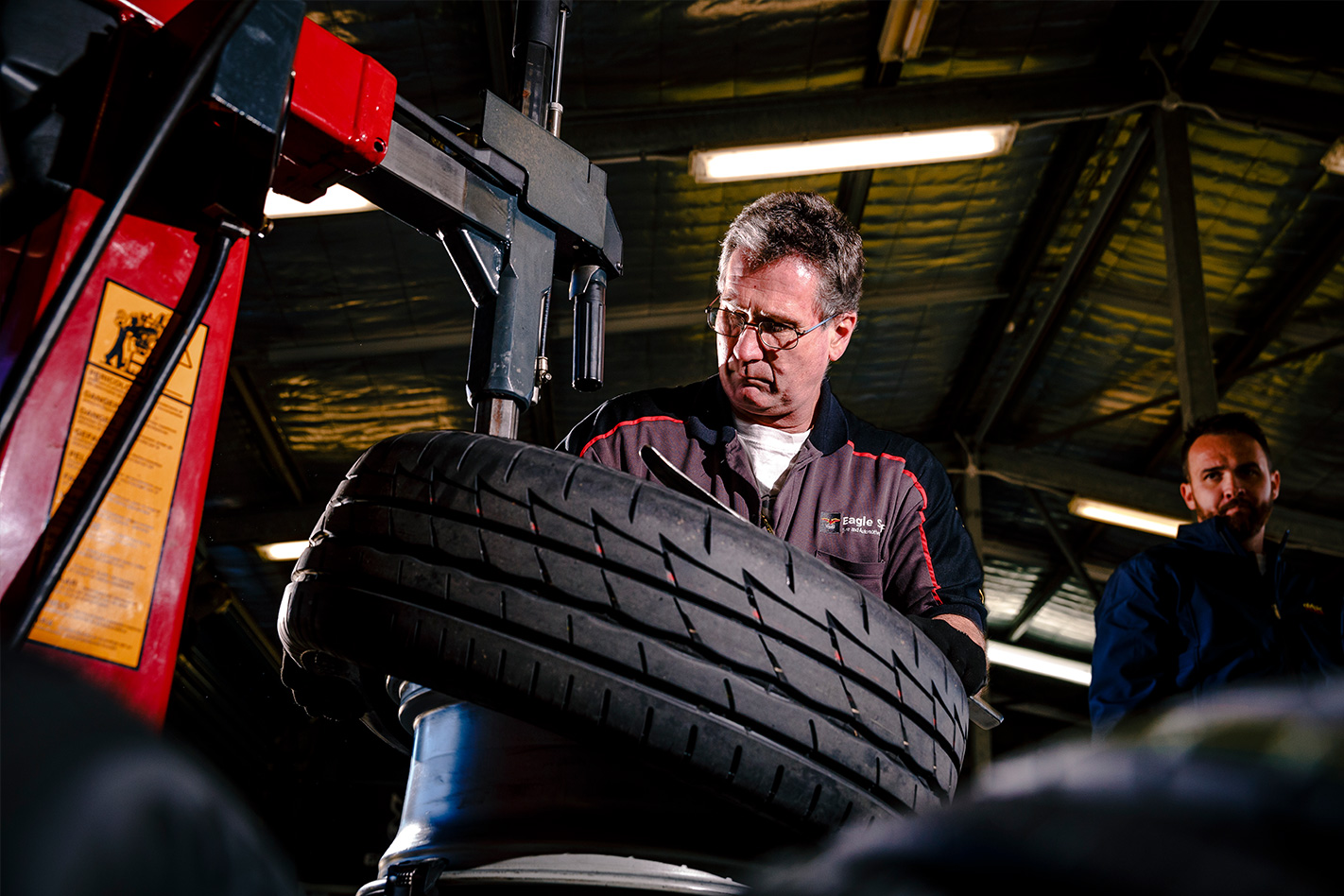
The car
Arriving at a suitable test car is a straightforward process. We ruled out an SUV or a hatchback to avoid covering old ground, leaving a medium sedan or wagon in the frame. Whichever model we chose had to be a good handler. It’d ideally be a mainstream passenger car rather than a high-performance model, in keeping with the style of tyres on test, and its electronic stability control system had to be one that could be switched fully off, so we could test only the chassis and tyres.
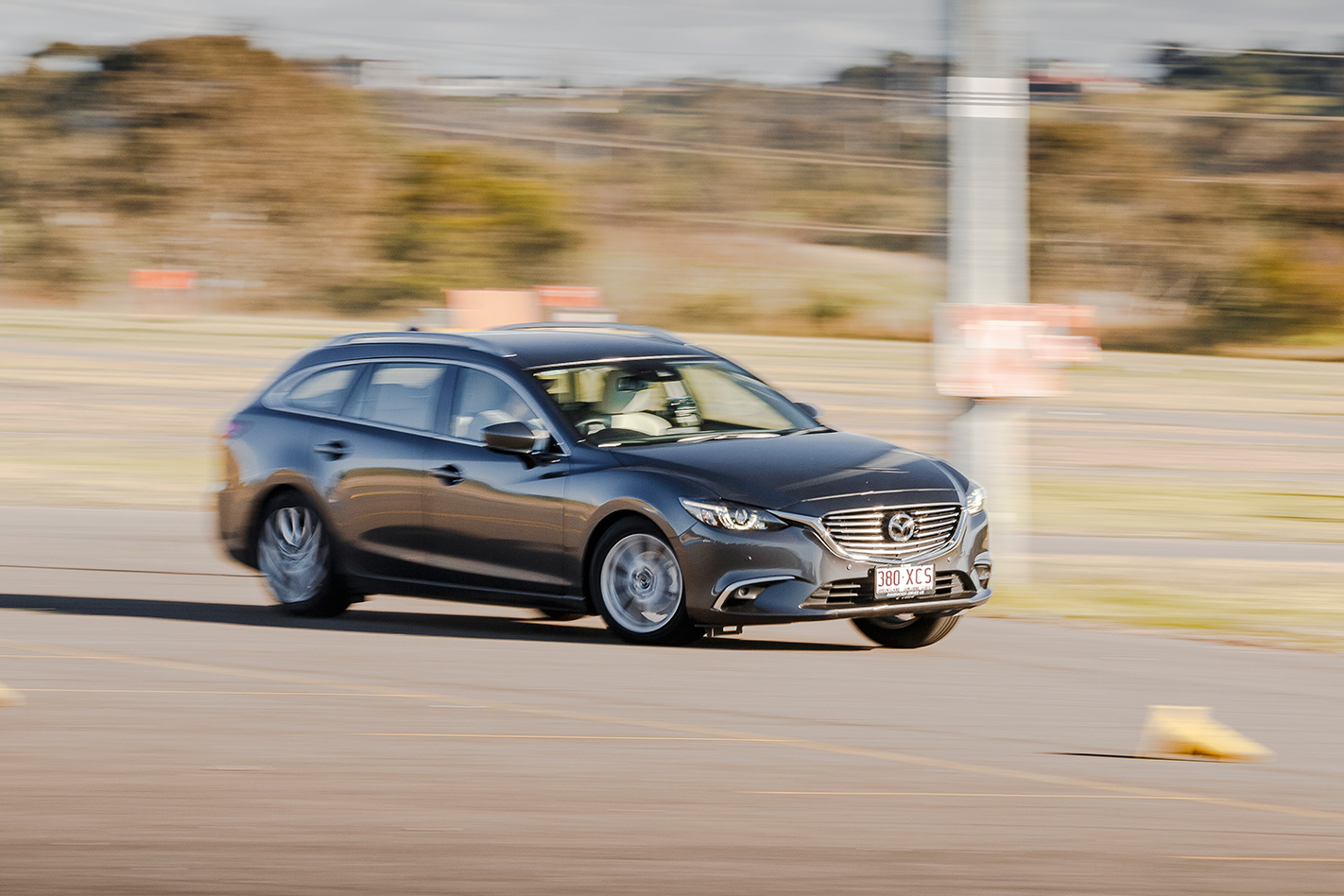
The driver
The arrival of his daughter Luna hasn’t slowed Sydney racing driver Renato Loberto one bit, though it has seen him pick up a few new skills. Not that he was lacking in that department, with an enviable set of abilities from automotive engineering to event planning and management, driving instruction and race-car development, all deployed via his MotoKinetic.com.au business.
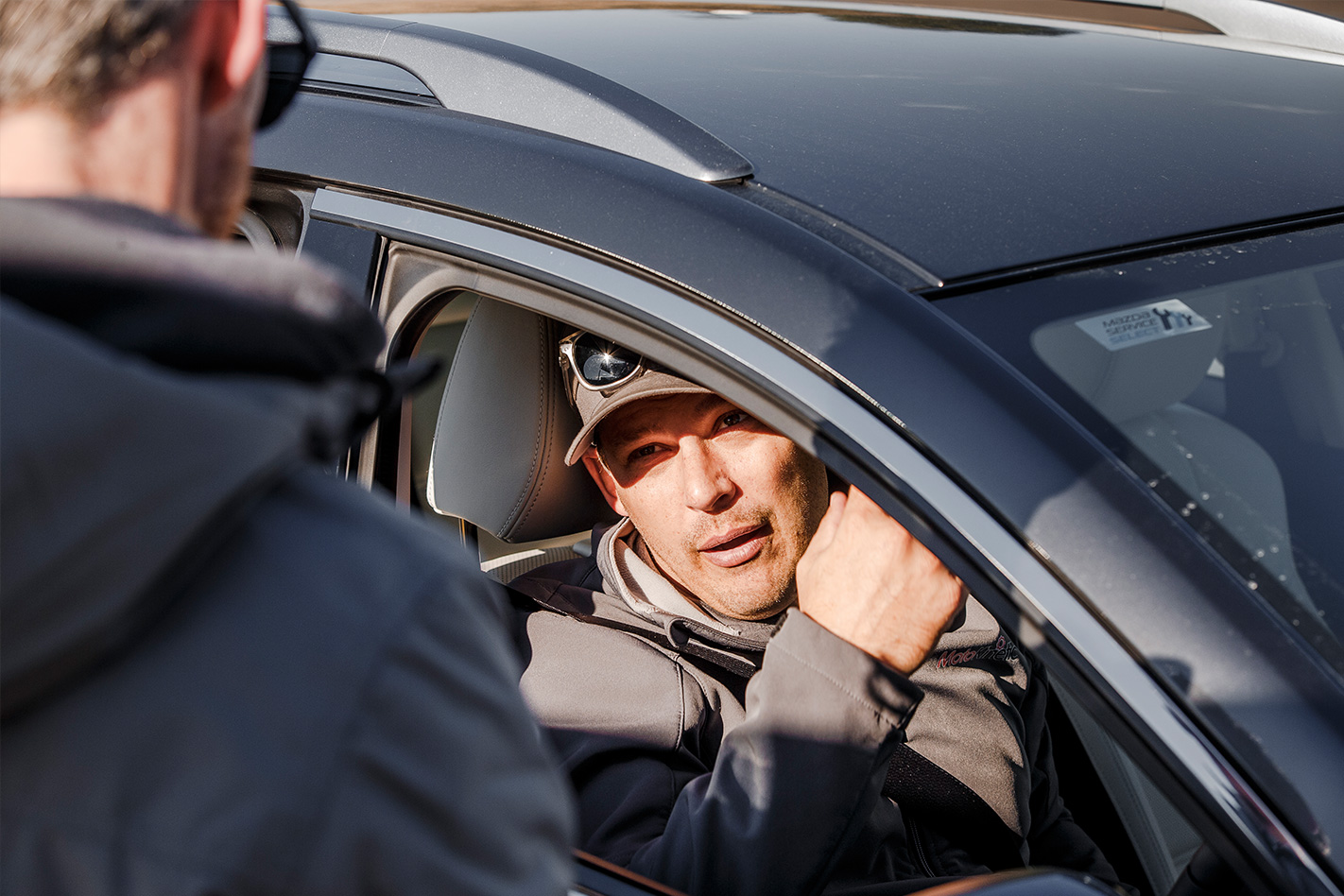
JAX Tyres and Eagle SMF
The team from JAX Tyres, with equipment and assistance from Eagle SMF Tyre and Automotive Equipment, had the Sydney Dragway scrutineering shed looking like one of their 80-odd East Coast (and Tassie) retail locations before we’d finished our morning coffee. Their organisation and tyre-fitting speed let us conduct our testing with utter ease.
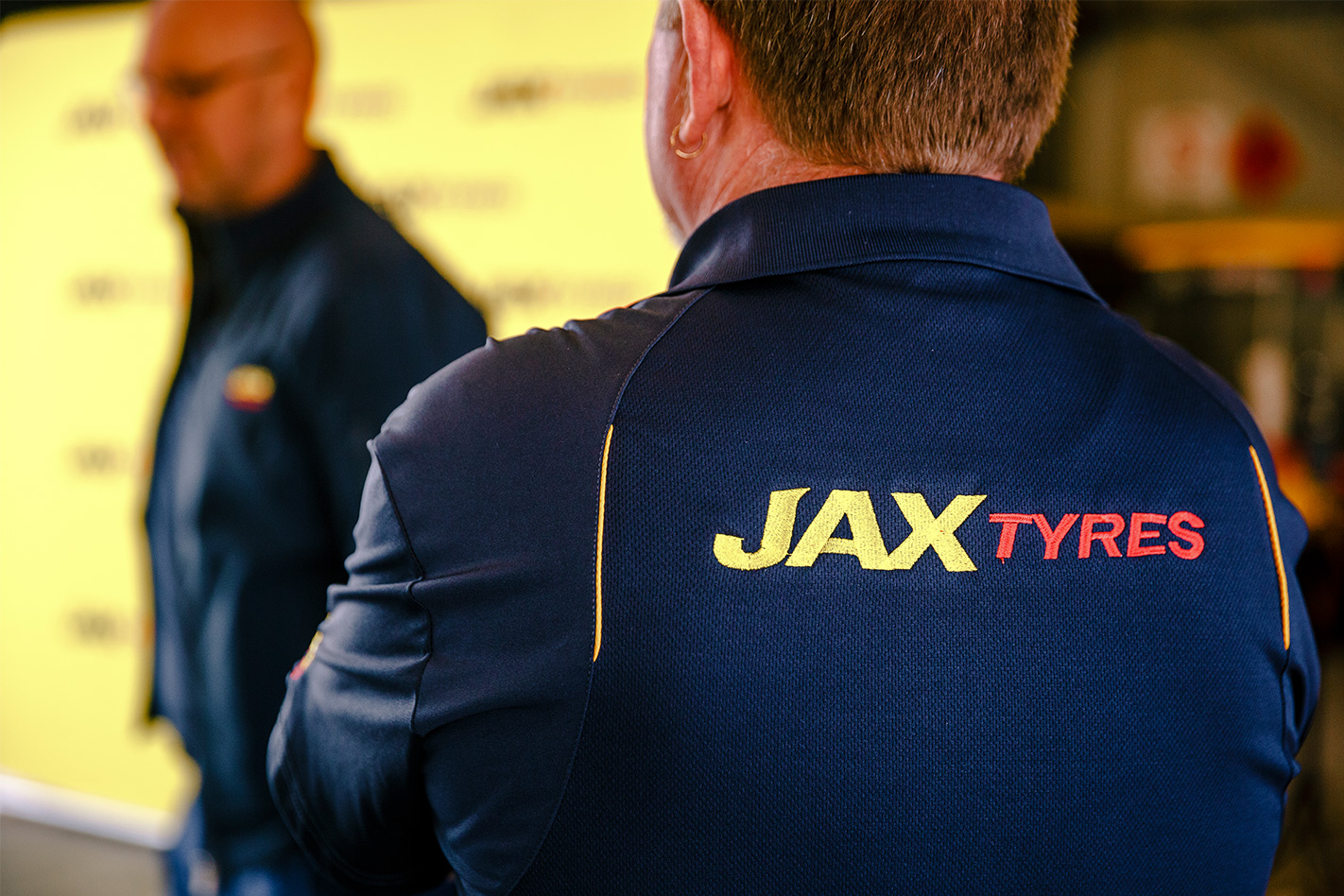
The ringmaster
Considerable road-testing experience backed by a degree in engineering sees Sydney motoring journalist Jimmy Whitbourn grid up as Tyre Test data analyst, and author, for the third time in as many years.
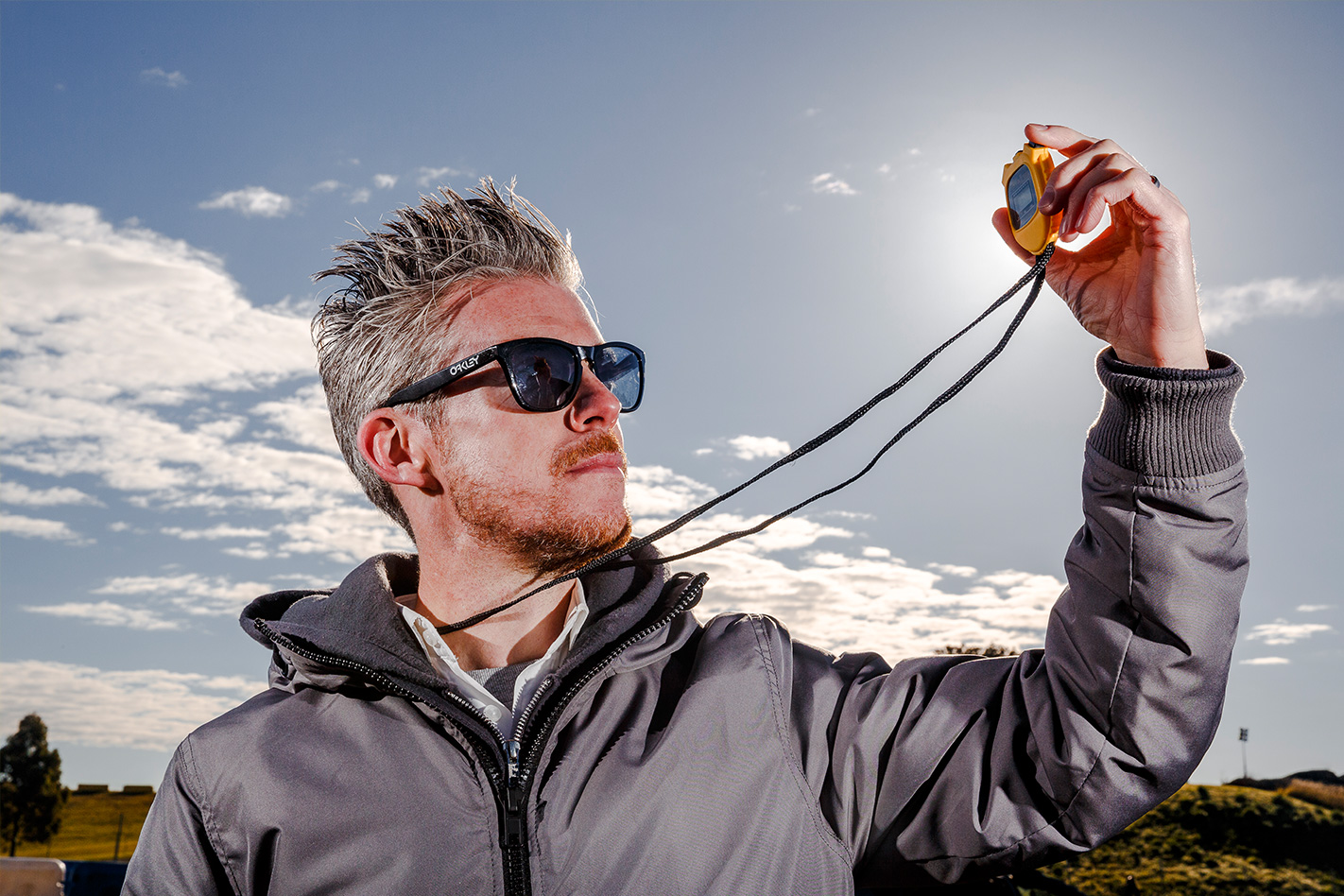
Slalom
THE SLALOM, or ‘swerve and recover’ test, is a neat way to gather data on a tyre’s transient grip level – and collision avoidance ability – in the space of six seconds. Ren did upwards of 50 slalom runs, with an entry speed of 65km/h, and rarely clipped a cone marker – it only happened when a tyre let the car slip slightly off line.
But here, with masses of run-off area, the consequences of a lose – or a cone collision – are nil. On the road, the obstacle you find yourself desperately trying to avoid might be a jaywalker or another car. Clearly, a tyre that can respond quickly has the ability to save your bacon. With ESC off, the Mazda 6 was free to express a bit of attitude on some of the tyres – notably, the Continental, which allowed a fair amount of tail-wagging – but the stopwatches and the Performance Box told the full story.
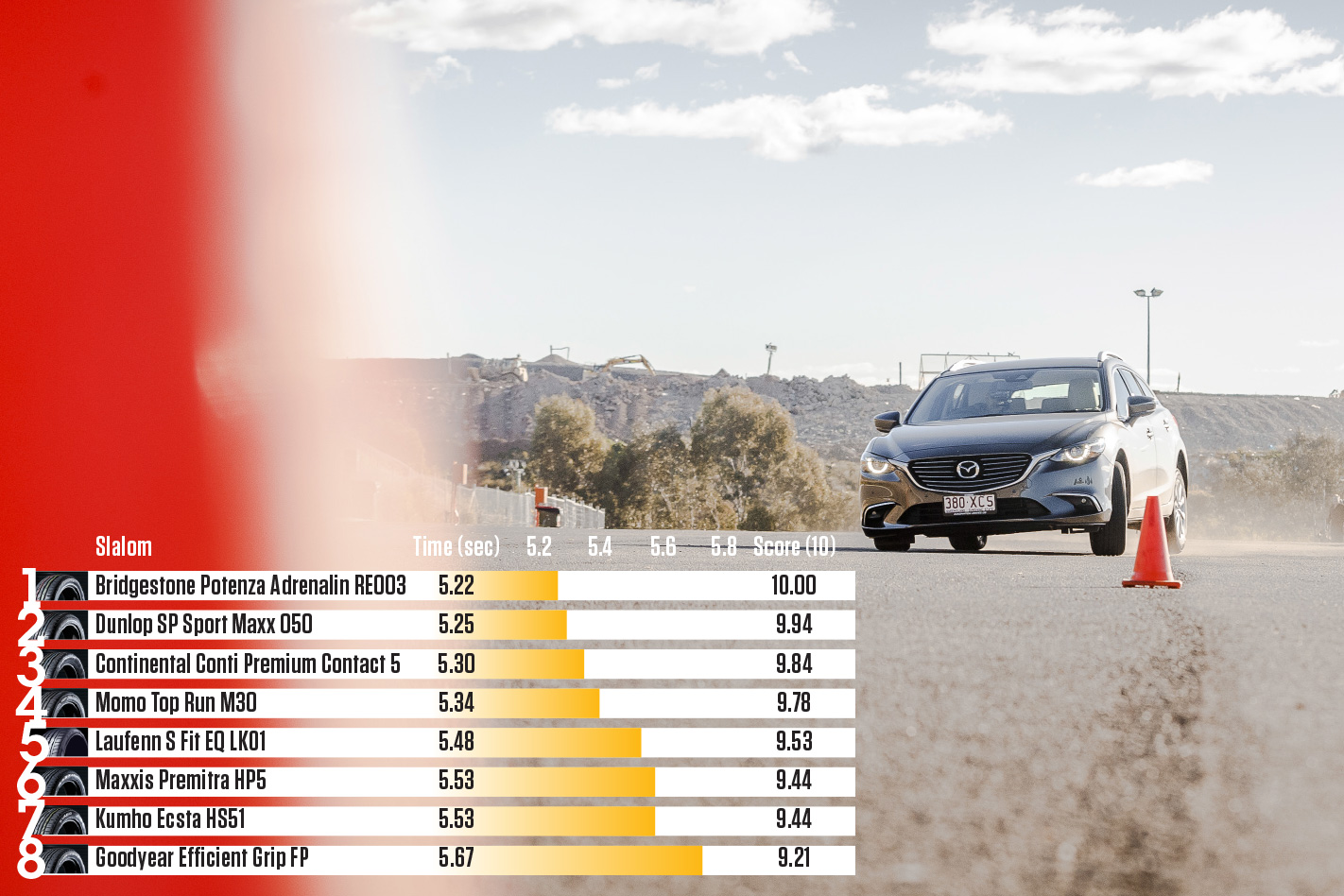
Winner: Bridgestone RE003
“Really direct steering feel,” read Renato’s initial notes on the Bridgestone Potenza Adrenalin RE003. It turned out the Bridgestone was quick through the slalom too, though there was only a tenth covering it and the Dunlop and Continental. This was despite the Continental exhibiting tail-happy tendencies that required constant correction.
The Goodyear Efficient Grip was the exact opposite of the Conti in that it was crisply responsive, but not quick between the cones, trailing the Bridgestone by almost half a second. The Maxxis in sixth place was similar in that it felt good, but couldn’t deliver against the stopwatch.
Dry Braking
Before anti-lock braking became standard in every passenger car, ‘cadence braking’ was the technique used to simultaneously steer and stop. It involves pumping the brake pedal and is essentially the manual version of what ABS does for you in a modern car. Classic car guys still regard the old-school way as a valuable skill, but all most of us need to be capable of is pressing the brake pedal hard.
You don’t need to be strong or skilled to carry out an emergency stop, though it does pay to try it out in controlled conditions before you’re faced with a real panic braking scenario. The pulsing pedal feel and the graunching noise of the system can be disconcerting, but only the first couple of times. Renato carried out dry-surface emergency stops more than 50 times over the course of the Tyre Test, the discipline conducted over the same dusty coarse-chip section of Sydney Dragway, from 80km/h.
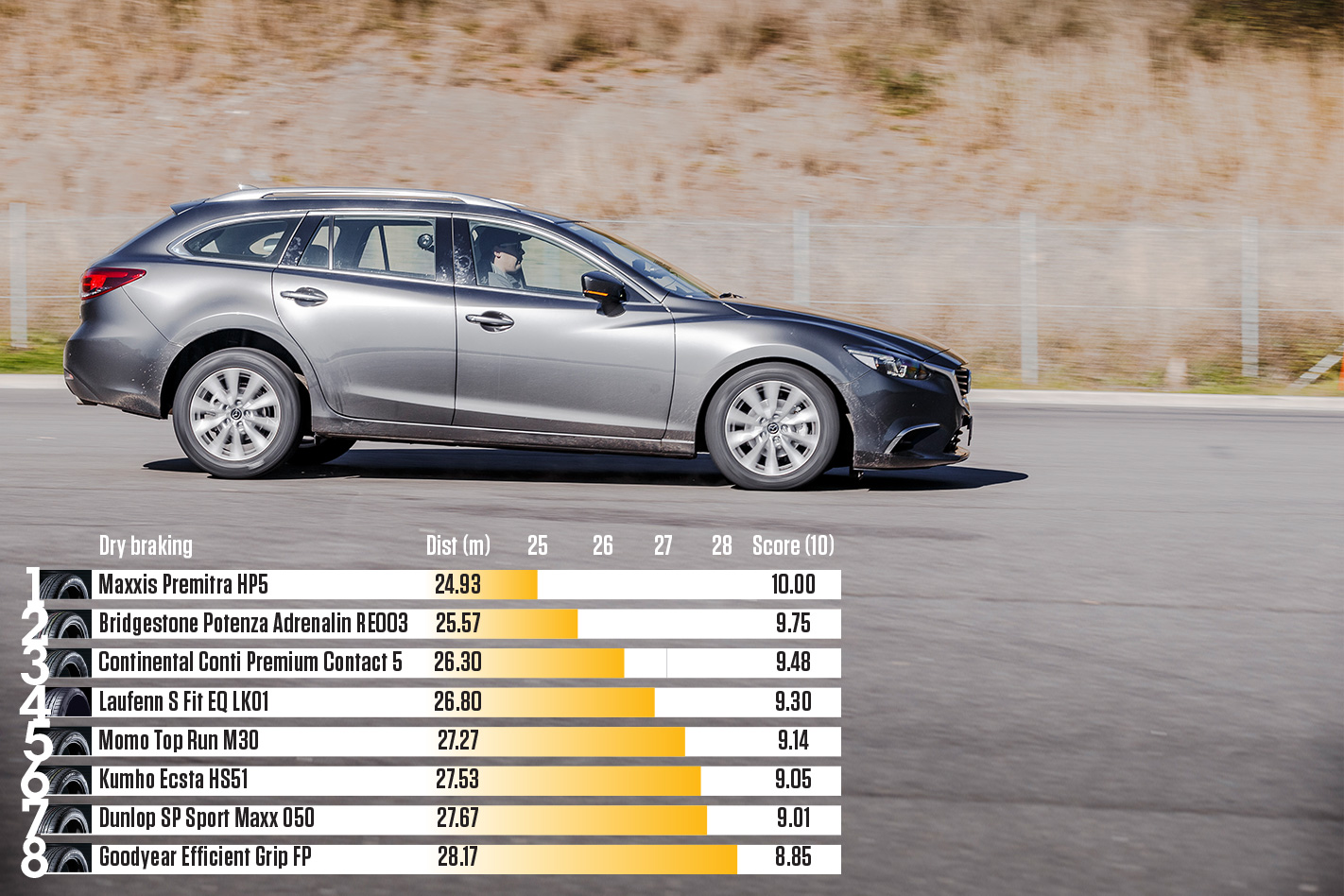
Winner: Maxxis Premitra HP5
Renato noted that the Maxxis “got slightly crossed up,” during the dry brake tests, but the seat of the pants feel didn’t indicate any lack of stopping power. In fact, the Maxxis Premitra HP5 pulled up an average of 0.6m shorter than the next-best stopper, the Bridgestone, which Ren recorded as having “very positive brake pedal modulation”.
Comparing the Maxxis with the dry-braking tail-ender saw its advantage increase to more than half a car length. The dry brake test saw the Maxxis rubber, erm … bounce back, then, from sixth place in the slalom. Yet this wouldn’t be its only podium, or even its sole gold…
Handling Circuit
While the slalom and brake test elements are designed to isolate a tyre’s cornering and braking talent, the handling circuit instead puts every aspect of tyre ability together as a compact way of measuring a tyre’s handling and collision-avoidance capability. The fact that it’s a bit of fun certainly doesn’t hurt driver morale considering the repetitious, analytical nature of the rest of the program. A lap starts with an open right hand sweeper, which feeds into right and left hairpins, followed by a short straight.
Then there’s a 90-degree right-hander, a left/right chicane, and the start/finish line. We use the circuit to scrub the surface of each new set of tyres too, and it’s startling to see how much grip improves after a handful of laps. Every element from transient and steady cornering to braking is tested, and tyre temperature is added to the equation, the left front copping the worst of it over our trio of two-lap dashes.
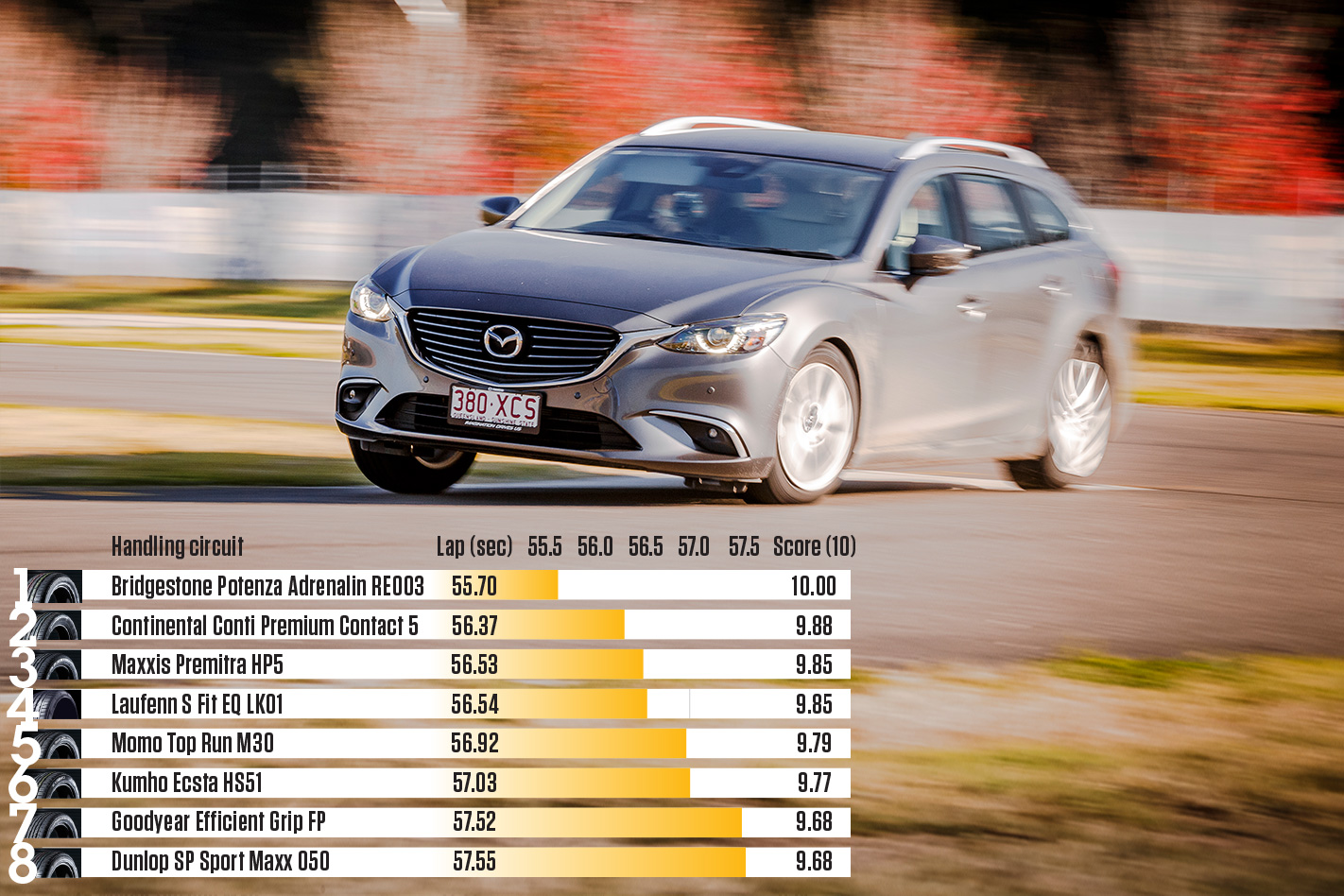
Winner: Bridgestone RE003
The handling circuit set the stage for the Potenza Adrenalin RE003 to claw back ground on the Maxxis, which had thus far prevented a Bridgestone one-two by pipping it under braking. A 0.67sec gap between the Bridgestone and the Continental in second established it as clearly the quickest tyre on test, and the one capable of the highest peak G figure, at 1.01.
The Continental cornered with less lateral force, at 0.93G, yet proved quick. Not to be left in the dust, the Maxxis trailed by just 0.17sec while pulling a peak of 0.96G, with Ren reporting the “excellent handling” on the Conti and “good feel” on the Maxxis.
Wet Braking
Wet braking is the discipline that means the most, because in these slippery conditions a good tyre can help the average driver avert a crash-course in making insurance claims.
Consider the best-to-worst difference in dry braking distance, and increase it by 40 percent. That distance – 4.60 metres – is the difference in the wet. That hypothetical car owner in our introduction – y’know, the bozo that simply wants the cheapest tyres – is still disturbingly common according to our sources. And while we understand that not everyone is into hi-po handling, we’d like to think most people can see the value in tyres that will help them stop quickly in the rain.
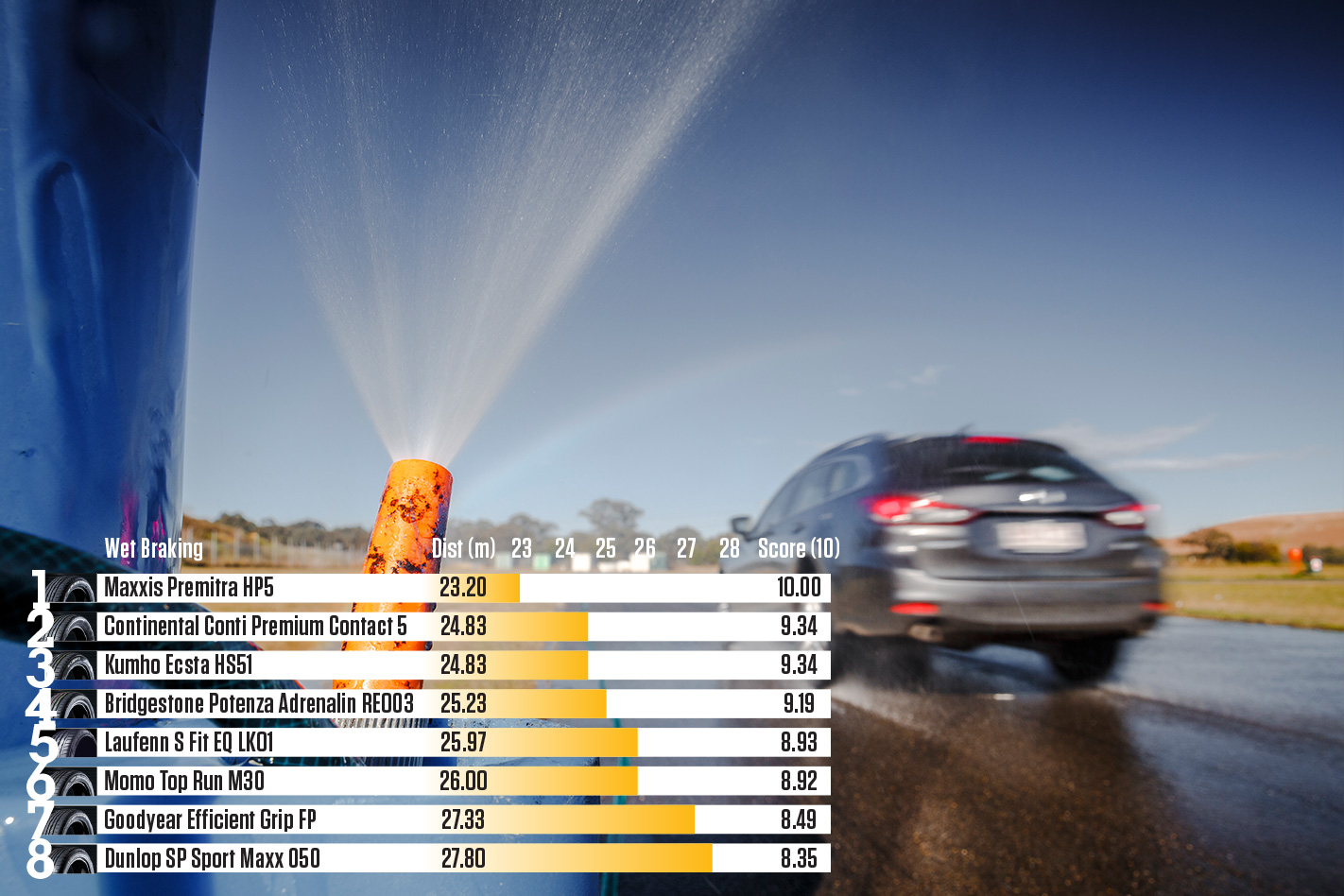
Winner: Maxxis Premitra HP5
With the taps on, 1.6 metres separated the Maxxis’ average braking distance from that of the second-placed Continental. At 23.2m, the Maxxis also stopped 2.5m shorter than the average tyre, and 4.6m shorter than the wooden-spooner.
It also stopped better in the wet than the dry, and it wasn’t the only tyre to display this unexplained phenomenon. In fact, every tyre bar the Dunlop performed better in the wet than the dry, with the Continental claiming second place and the Kumho rising to score its sole podium. As for the winner, the Maxxis is a sure stopper, whether the road is wet or dry.
Tyre Noise
If you take the extremes of road tyres available, it’s easy to come to the conclusion that high-performance tyres are noisy.
After all, semi-slicks drone like bastards (as well as throwing lots of road grit loudly into the wheel arches), while one of the ways low-rolling resistance eco-tyres save fuel is by turning comparatively little of their kinetic energy into road roar. Yet these examples don’t necessarily paint the whole picture, as our tyre noise test illustrates.
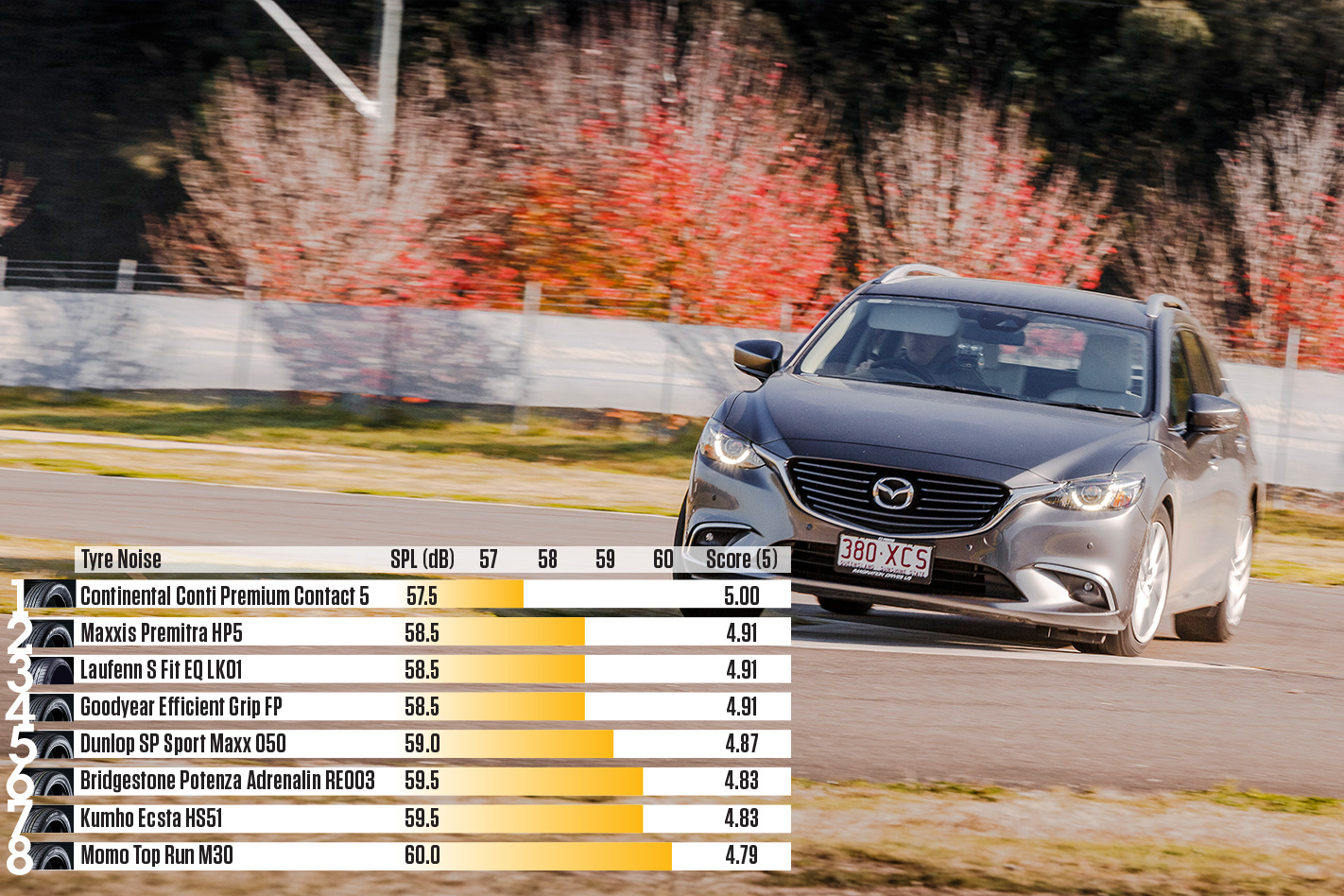
Given the unpredictable noise/grip relationship, the noise test element provides the opportunity for a hushed tyre that’s fallen down elsewhere to gain some ground. The noise score is weighted at half that of the four dynamic disciplines. Too much? Not enough? Grab your calculator and apply your own weighting to tyre noise – just as you can with any of the disciplines – to arrive at your own winner.
Winner: Conti Prem Contact 5
The Continental Conti Premium Contact 5 finished on the podium in every Tyre Test discipline, but its only gold came in the noise test.
Tyre quietness might outweigh all other qualities on a sunny Sunday drive in the country, but is often inversely proportional to grip and performance. That’s not the case with the grippy Conti, though, which at 57.5dB was 2.5dB quieter than the Momo, which Ren noted squealed more than the other tyres on the handling circuit.
The Kumho (59.5dB) was vocal when pushed too, and the Bridgestone and Goodyear were notably noisy during wheelspin.
Winner: Maxxis Premitra HP5
SOMETIMES a tyre goes about its Tyre Test campaign by beating all comers at every discipline. Other times, it’s via a blend of ability that’s reflected in a series of solid showings, which is how it happened in 2017.
The Maxxis Premitra HP5 was a standout when it came to braking, not just out-stopping its rivals, but doing so by a margin that made it clear this tyre has something special under brakes. It was quick enough around the handling circuit to finish third, and it felt good doing it. And the Maxxis was also among a gaggle of tyres in equal second in the noise test.
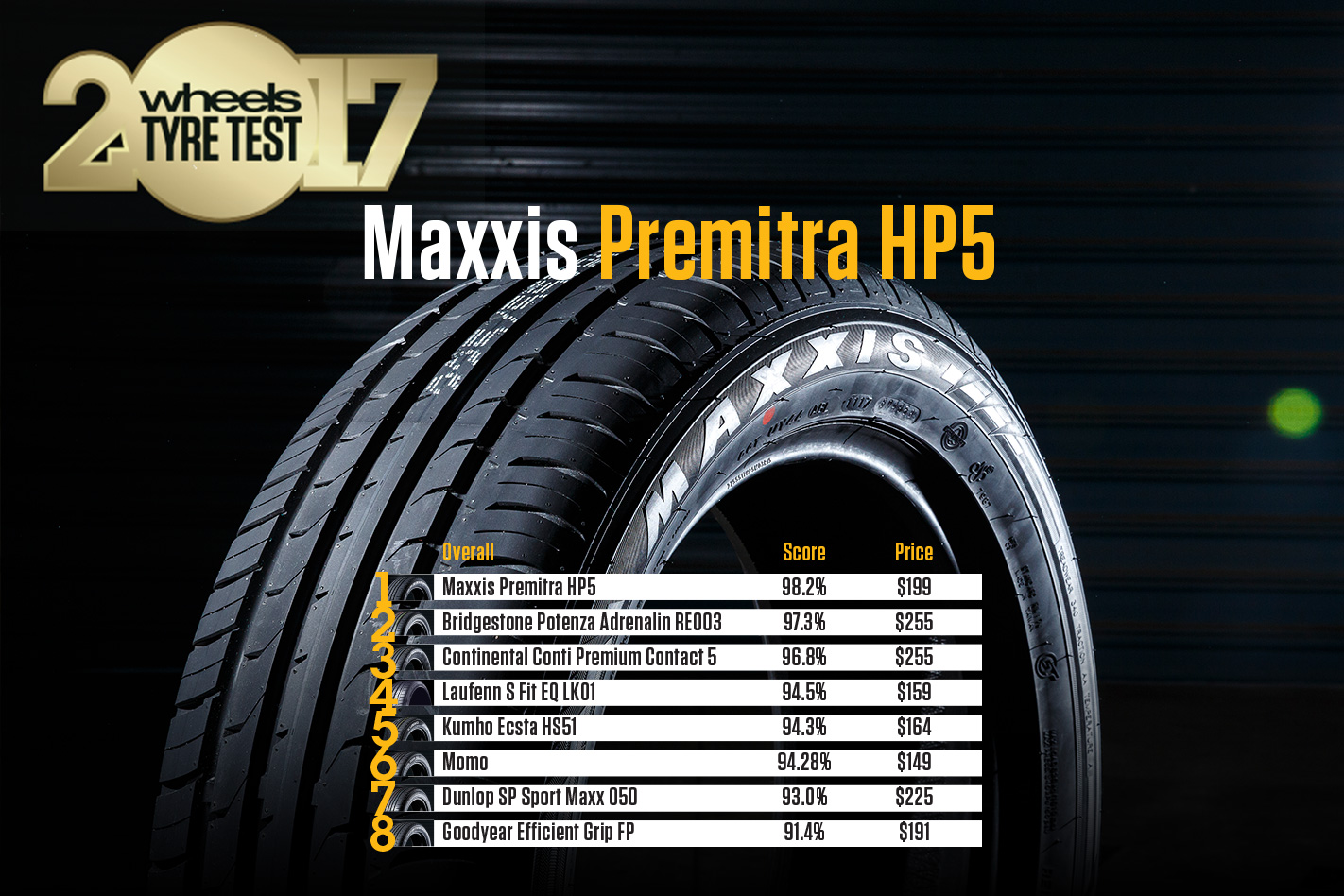
Like the Maxxis, the Bridgestone topped the score sheets in two tests. Its slalom and circuit victories neatly reflect its performance positioning and abilities. With a second and a fourth, respectively, it’s a great stopper in the dry and average-to-good in the wet.
The Bridgestone’s least impressive result of second last in the tyre noise test will bother some buyers more than others. If you take only the dry test results, the Bridgestone finishes first, bumping the Maxxis to second and leaving the Conti third, so it might be the tyre for a sunny Sunday machine.
Despite claiming just one victory (in the tyre noise test) the Continental was in fact more consistent than the Maxxis and the Bridgestone, standing on the dais at the conclusion of every discipline. Second place in both the circuit and wet braking tests and third in dry braking and the slalom reflect an impressive mix of safety- and performance-focussed characteristics. Yet it’s the decently quiet, impressively agile and exceptionally hard-stopping Maxxis Premitra HP5 that tastes Wheels Tyre Test glory for 2017 – a deserved victory.

